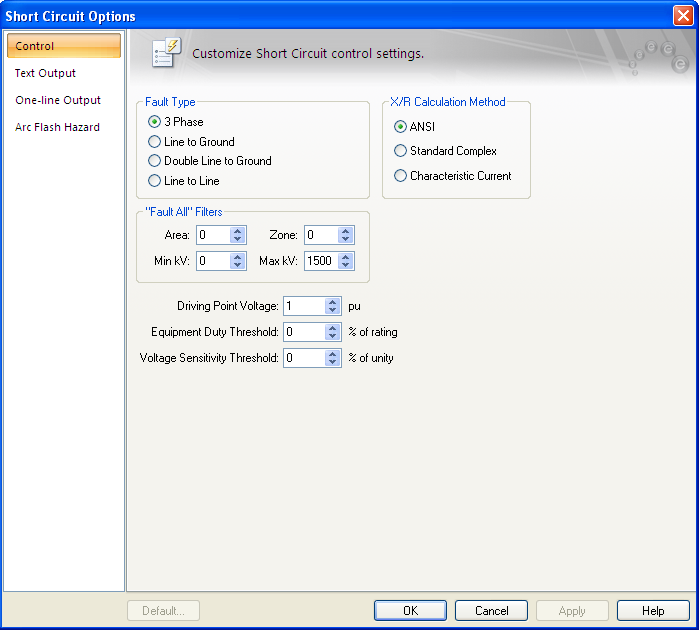Control Tab
To set short circuit options, from the Short Circuit focus, click SC Options.
On the Control tab, specify the options you want for controlling the behavior of a short circuit study.

Figure 1: Control Tab of the Short Circuit Options Dialog Box
More Information
| Short Circuit Options (ANSI) | TCC Options |
| Short Circuit Reference (ANSI) | SmartDuty™ |
| Faulting a Bus | Controlling the Analysis |
| Voltage Sensitivity Studies |

